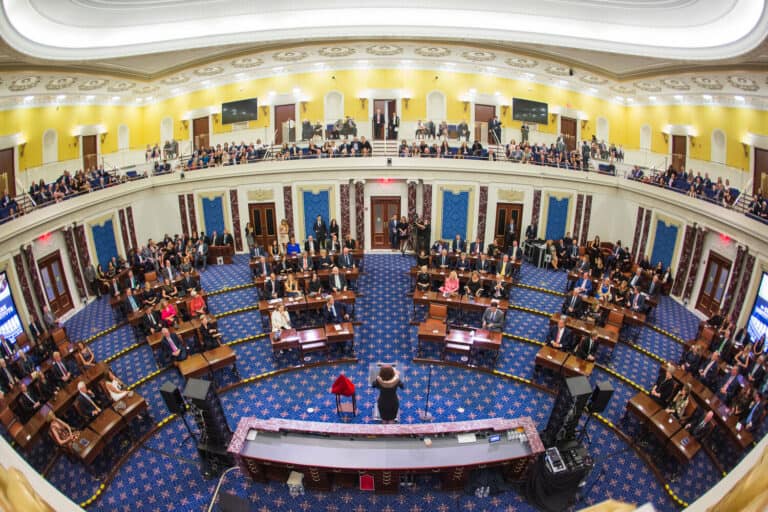Hannah Belitz is a student at Harvard Law School.
When we talk about disappearing jobs, we often think of men. But as the New York Times notes, women are also part of the trend. In the United States, the “share of prime-age women bringing home a paycheck rose at the end of World War II” and continued increasing during the 1970s and 1980s before it peaked in 1999 at 77 percent. In the early 2000s, however, women’s participation in the labor force began decreasing — making the United States one of the only major countries in the Organization for Economic Cooperation and Development not to have a rising rate of female workforce participation. During the recession, that rate plunged further, and it has failed to bounce back. In 2015, only 73.7 percent of women between the ages of 25 and 54 were in the work force.
Although Trump met with several union leaders on Monday, the gathering was limited to representatives of the construction and building trades unions. Public sector and service industry unions — some of the most powerful supporters of Democrats in recent elections — were not invited. As Newsweek explains, the meeting may be “a sign of how Trump may seek to split organized labor as president.” Still, the excluded unions, such as the SEIU, aren’t backing down. SEIU President Mary Kay Henry told Newsweek that although Trump poses challenges to her union, the threats are “not existential,” and the SEIU is preparing to fight for the same blue-collar workers Trump managed to win over.
Taxpayers get stuck with the cost of supporting workers in the fast food industry. That’s the thesis of a recent Los Angeles Times article articulating why Andy Puzder as Secretary of Labor gives major cause for concern. The National Employment Law Project (NELP) estimates that Puzder’s CKE Restaurants, which owns the Carl’s Jr. and Hardee’s brands, collects a taxpayer-funded subsidy of about $247 million a year. According to NELP, that’s what it takes to “offset poverty wages and keep [CKE’s] low-wage front-line workers and their families from economic disaster.” The issue is particularly salient because Puzder opposes an increase in the minimum wage, but evidence exists that even modest minimum wage increases “help to cut the need of low-wage workers for assistance from Medicaid and other programs.”






Daily News & Commentary
Start your day with our roundup of the latest labor developments. See all
November 2
In today’s news and commentary, states tackle “stay-or-pay” contracts, a new preliminary injunction bars additional shutdown layoffs, and two federal judges order the Trump administration to fund SNAP. Earlier this year, NLRB acting general counsel William Cowen rescinded a 2024 NLRB memo targeting “stay-or-pay” contracts. Former General Counsel Jennifer Abruzzo had declared that these kinds […]
October 31
DHS ends work permit renewal grace period; Starbucks strike authorization vote; captive-audience ban case appeal
October 30
Sweden’s Tesla strike enters its third year; Seattle rideshare drivers protest Waymo’s expansion in the city.
October 29
9th Circuit rejects challenge to NLRB's constitutional structure; preemption challenges to state labor peace statutes
October 28
Two federal unions oppose CBA cancellations, another federal union urges Democrats to end the government shut down, and Paramount plans for mass layoffs
October 27
GM and Rivian announce layoffs; Boeing workers reject contract offer.